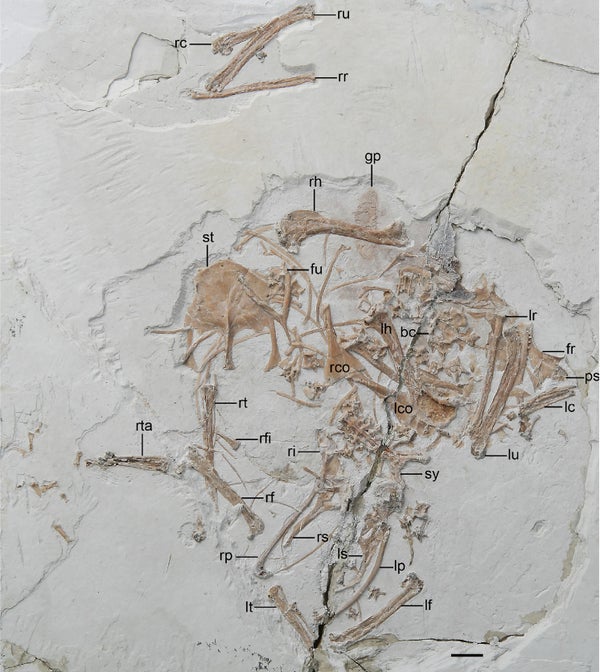This article was published in Scientific American’s former blog network and reflects the views of the author, not necessarily those of Scientific American
On supporting science journalism
If you're enjoying this article, consider supporting our award-winning journalism by subscribing. By purchasing a subscription you are helping to ensure the future of impactful stories about the discoveries and ideas shaping our world today.
Birds used to have teeth. From the Jurassic time of Archaeopteryx – the first bird – until the mass extinction that closed the Cretaceous 66 million years ago, toothy birds flew through the air and swam through the seas. Depending on your feelings about the feathered creatures this fact might seem amazing, frightening, or something out of a dream journal, but, regardless, the fossil record is clear that grinning birds thrived for over 84 million years alongside their more imposing dinosaurian relatives. But what did these enamel-bearing avians eat? A new fossil offers some partially-digested clues.
The 120-million-year-old bird, found from the Jehol fossil beds in Liaoning Province, China, isn’t as immediately beautiful as other articulated, fluffy fossils found in the same deposit. The tan bones of the as-yet-unnamed bird are a little jumbled, but their anatomy show that this was an enantiornithine - one of the toothed birds, distinct from the ancestors of today's beaked flyers. But what makes this fossil particularly noteworthy, paleontologist Min Wang and colleagues report, is a smattering of fish bones wrapped up in a neat little prehistoric package.
The piscine remains are in a "spindle-shaped cluster" beneath the right humerus, the researchers write, and appear to be a packed-down pellet of indigestiable tidbits that the Cretaceous bird vomited around the time it perished. In other words, these seem to be gut contents - one of just two fossils that indicate some of the enantiornithine birds ate fish.
Ancient fishy vomit dovetails* with another study on prehistoric birds that came out last month. Paleontologist Derek Larson and his colleagues determined that teeth might have been a liability a massive asteroid struck the Earth 66 million years ago. Dinosaurs with teeth - enantiornithines included - largely relied on catching and rending live prey, like fish. The ancestors of modern birds, on the other wing, were toothless and subsisted on seeds. So when the world was thrown into ashen chaos, the toothed dinosaurs had only meager pickings with beaked birds still had a store of seeds to get them through the tough times.
Even though the new Jehol bird lived tens of millions of years before the disaster, the prehistoric flyer still reinforces the view that toothy biters enjoyed a glut of meaty food until chance dealt them a bum hand. Had it not been for that chunk of extraterrestrial rock, birds that smile might still be alive today.
*I'm not sorry. The pun was right there.
Reference:
Wang, M., Zhou, Z., Sullivan, C. 2016. A fish-eating enantiornithine bird from the Early Cretaceous of China provides evidence of modern avian digestive features. Current Biology. doi: 10.1016/j.cub.2016.02.055
